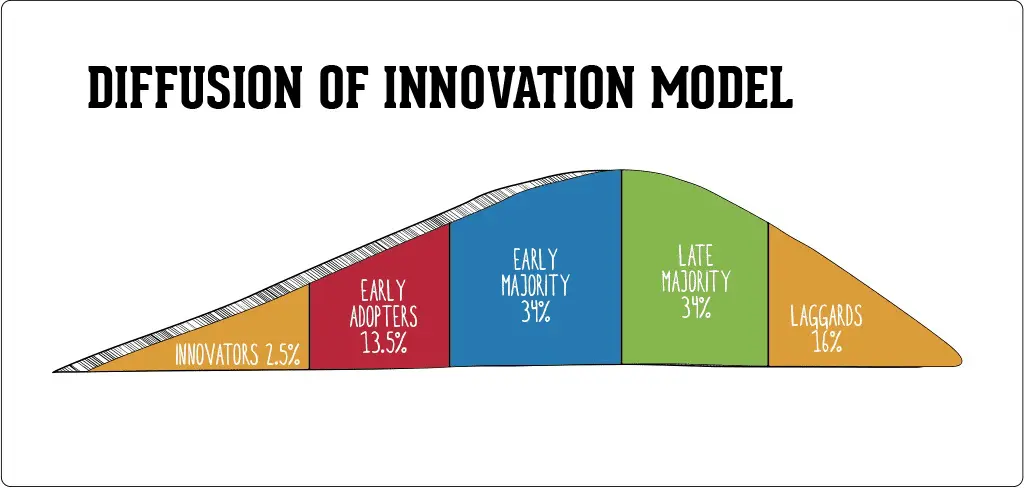Are you ready to take your business to the next level with cutting-edge digital solutions? Look no further! At InnoSewa, we specialize in providing comprehensive digital services that streamline your IT operations, enhance your online presence, and drive growth.
Started in 2017, InnoSewa helps companies make the promise of digital transformation a reality. We work collaboratively with you to create a deep understanding of the risks and opportunities presented by new emerging technologies and think creatively about how you can use these technologies to improve business performance.

Digital Marketing Strategy using Law of diffusion of Innovation
A business must have customers who will purchase their products or it will not survive for very long. It seems to make sense that web marketing and advertising should involve trying to get product information into as many minds as possible. Diffusion of Innovation model helps a business to understand how a buyer adopts and engages with new products or technologies over time. Companies will use it when launching a new product or service, adapting it or introducing an existing product into a new market.
It shows how the product can be adopted by five different categories/customer types and how to engage as a business with these types of people.
The Law of Diffusion Innovation
Premature scaling is the #1 cause of start-up failure. Start-ups need 2–3 times longer to validate their market than most founders expect. This is largely due to the Law of Diffusion of Innovation.

How does the Diffusion Model Apply to Marketing?
When we look at the five types of adopters as explained by the Diffusion of Innovation we can see what types of web marketing strategies are necessary to ensure success. When looking at it as a marketing model we can make the five adopters into five different classes of consumers. The five classes of consumers are broken up like this:
· Innovators make up about 2.5% of a population. They are the type of people who are running out to try a new product simply because it’s new. They are quick to embrace and create new ideas which force the rest of the population to look at the world in a different light.
· Early Adopters are only about 13.5% of a population. This group is not as quick to generate a new idea but they are quick to embrace a product or idea that appears to be valuable to them. Once they feel like a product is useful they will do whatever it takes to obtain it. They are also very quick to offer referrals to others about the products that they like.
· Early Majority consumers are approximately 34% of a population. This group is relatively slow to adopt new technologies, products or ideas. They are very practical and are not generally the ones who will try a product first, but may begin to pursue it once they know of others who have already tried it.
· Late Majority is also about 34% of a population. This group of consumers is also very practical in how they approach new products or ideas. They are even less eager to adopt new ideas, technologies or products. They will rarely try anything new until it has been tried and tested by many others.
· Laggards will make up the other 16% of a population. They are the absolute last to try a new product or service. They will finally begin to pursue a new product or ideas only after their “regular” options are no longer available.
Getting 1% to 2% of customers in a market is relatively easy as these are the innovators. The tipping point for success is at 15–18% market penetration. Scaling at less than 10% of market penetration is considered premature scaling. This is because you may believe you have market fit, when in fact you don’t. At 10% you are still only a bit over halfway into the innovators/early adopters. As a rule, they tend to adopt anything, but only for a short while. Don’t consider them to be a true positive of product/market fit.
InnoSewa helps companies in making & implementation of digital marketing strategy. We work collaboratively with you to create a deep understanding of the risks and opportunities presented by new emerging technologies and think creatively about how you can use these technologies to improve business performance.









